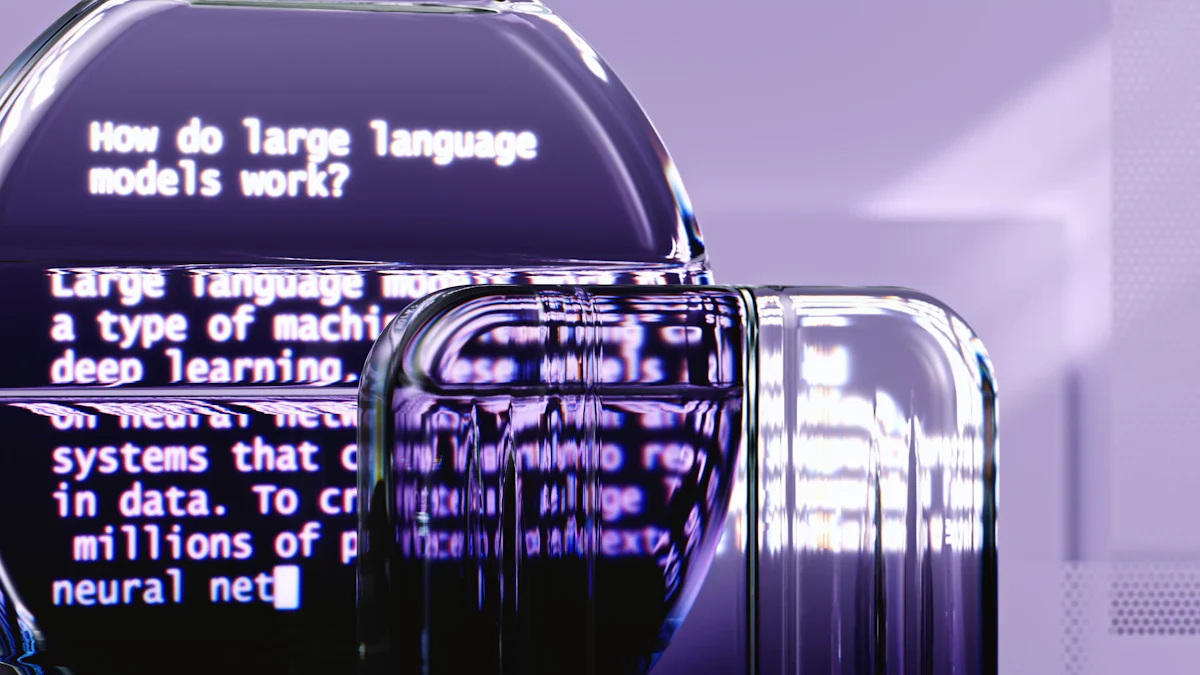Generative AI in Writing: Tips for a Smoother Workflow

Generative AI writing has transformed the writing industry. Many writers now utilize tools like ChatGPT and other AI Blog Writers to boost productivity. Surveys indicate that 52% of users have heightened their dependence on generative AI since inception. Enhancing the writing workflow is essential for efficiency. Generative AI provides a multitude of advantages, such as automating tasks and enhancing creativity. This blog is designed to offer practical advice on incorporating generative AI writing into writing processes.
Understanding Generative AI in Writing
What is Generative AI?
Definition and Basic Principles
Generative AI refers to artificial intelligence systems that create new content. These systems use algorithms and machine learning models to generate text, images, or other media. The basic principle involves training on large datasets to understand patterns and structures. This training enables the AI to produce coherent and contextually relevant content. For more information, you can explore Understanding Generative AI: An Insight into Its Functioning.
Examples of Generative AI Tools
Several tools exemplify the power of generative AI writing. Writesonic uses GPT-4 to generate both short-form and long-form content. HubSpot offers a versatile AI writing tool for blogs, social media posts, and emails. Copy.AI specializes in generating social media posts and blog ideas quickly. Outwrite checks grammar, rates readability, and suggests style improvements. AI Writer provides a free trial to explore its capabilities. Writerly generates over 50 types of writing automatically. Outranking combines writing assistance with search analysis and automated workflows.
How Generative AI is Transforming Writing
Enhancing Creativity and Idea Generation
Generative AI writing tools boost creativity by providing a continuous stream of innovative ideas. Writers can use these tools to brainstorm topics, develop outlines, and generate initial drafts. For example, Copy.AI helps generate blog ideas in seconds, enabling writers to focus on refining and expanding those ideas.
Streamlining the Editing Process
Generative AI also streamlines the editing process. Tools like Outwrite offer grammar checks, readability ratings, and style suggestions. These features help writers polish their work efficiently. Outranking provides automated writing workflows, making the editing process smoother and more organized.
Personalizing Content for Different Audiences
Personalization becomes easier with generative AI. HubSpot's AI writing tool can tailor content for various platforms, such as blogs, landing pages, and social media posts. This capability ensures that the content resonates with different audiences, enhancing engagement and effectiveness.
Practical Tips for Integrating Generative AI into Your Workflow
Choosing the Right Tools
Evaluating Different Generative AI Platforms
Writers must evaluate various generative AI platforms to find the best fit. Each platform offers unique features that cater to different writing needs. For example, Writesonic generates both short-form and long-form content. HubSpot provides tools for blogs, social media posts, and emails. Copy.AI specializes in creating social media posts and blog ideas quickly.
Evaluating these tools involves understanding their capabilities and limitations. Writers should consider ease of use, cost, and the quality of generated content. Reading reviews and testing free trials can help in making an informed decision.
Matching Tools to Specific Writing Needs
Matching the right tools to specific writing needs ensures efficiency. An AI Blog Writer like Writesonic may suit those who need versatile content generation. Copy.AI could be ideal for social media managers needing quick post ideas. Outwrite benefits writers focusing on grammar and readability improvements.
Identifying the primary writing tasks helps in selecting the most suitable tool. For instance, content creators needing SEO-optimized articles might prefer Outranking. This tool combines writing assistance with search analysis and automated workflows.
Setting Up Your Workflow
Initial Setup and Configuration
Setting up generative AI tools requires careful configuration. Begin by installing the software and linking it to existing writing platforms. Many tools offer plugins or integrations with popular writing software like Microsoft Word or Google Docs.
Configuring settings to match personal writing styles enhances the output quality. Adjust parameters such as tone, formality, and content length. Regularly updating these settings ensures the AI adapts to evolving writing preferences.
Integrating AI Tools with Existing Writing Software
Integrating AI tools with existing writing software streamlines the workflow. Many generative AI writing tools offer seamless integration options. For example, HubSpot's AI tool integrates with its CRM, allowing for personalized content creation directly within the platform.
Writers should explore integration possibilities to maximize efficiency. Connecting AI tools with project management software can also enhance productivity. This integration allows for better tracking of writing tasks and deadlines.
Best Practices for Using Generative AI
Balancing AI-Generated Content with Human Input
Balancing AI-generated content with human input maintains authenticity. Generative AI writing tools can produce initial drafts or ideas. However, human writers should refine and personalize the content. This approach ensures the final output aligns with the intended message and tone.
Human oversight is crucial for maintaining quality. Writers should review and edit AI-generated content to correct errors and enhance coherence. This balance leverages the strengths of both AI and human creativity.
Ensuring Originality and Avoiding Plagiarism
Ensuring originality in AI-generated content is vital. Writers must use plagiarism detection tools to verify the uniqueness of the content. Many generative AI platforms include built-in plagiarism checkers. These tools help maintain the integrity of the writing.
Writers should also customize AI-generated content to reflect their unique voice. Adding personal insights and experiences enhances originality. This practice prevents the content from appearing generic or repetitive.
Regularly Updating and Training AI Models
Regularly updating and training AI models improves their performance. Generative AI tools rely on large datasets for learning. Providing updated and relevant data enhances the accuracy and relevance of the generated content.
Writers should periodically review and update the training data. This practice ensures the AI adapts to new trends and writing styles. Continuous improvement of AI models leads to better content quality over time.
Ethical Considerations and Challenges
Addressing Bias in AI-generated Content
Understanding Potential Biases in AI Algorithms
Bias exists in all aspects of life. AI algorithms reflect biases from training data. These biases can influence the content generated by AI tools. For example, political and ideological biases may appear in AI responses. Recognizing these biases helps in managing their impact on writing.
Strategies for Mitigating Bias
Writers can take steps to mitigate bias in AI-generated content. First, diversify the training data. Including a wide range of sources reduces the risk of biased outputs. Second, regularly review and update the AI models. This practice ensures that the AI adapts to new, unbiased information. Third, involve human oversight. Human editors can identify and correct biased content before publication.
Maintaining Transparency and Accountability
Disclosing AI Involvement in Content Creation
Transparency in AI-generated content is crucial. Writers should disclose the use of AI tools in content creation. This practice builds trust with the audience. Readers appreciate knowing when AI contributes to the writing process. Clear disclosure also maintains ethical standards in content creation.
Ensuring Ethical Use of AI Tools
Ethical use of AI tools involves several practices. First, avoid using AI to create misleading or harmful content. Second, respect copyright laws. Ensure that AI-generated content does not infringe on intellectual property rights. Third, prioritize user privacy. Do not use AI tools to gather or misuse personal information. Following these guidelines ensures responsible use of AI in writing.
Future Trends in Generative AI and Writing
Emerging Technologies and Innovations
Advances in Natural Language Processing
Natural language processing (NLP) continues to evolve rapidly. These advancements enable generative AI writing tools to understand and generate more accurate and contextually relevant content. Improved NLP models can better grasp nuances, idioms, and complex sentence structures. This progress enhances the quality of AI-generated text, making it more human-like and engaging.
Generative AI writing tools now offer features like sentiment analysis and tone adjustment. These capabilities allow writers to tailor their content to specific emotional tones or audience preferences. For example, AI can help create a friendly blog post or a formal business report with equal ease. These advancements make generative AI writing more versatile and effective.
Integration with Other Creative Fields
Generative AI is not limited to text generation. The integration of AI with other creative fields opens new possibilities for writers. AI tools can now generate images, music, and even video content. This integration allows for a more holistic approach to content creation.
For instance, a writer can use AI to generate both the text and accompanying visuals for a blog post. This capability streamlines the content creation process and ensures consistency across different media. The synergy between generative AI writing and other creative fields enhances the overall impact of the content.
Predictions for the Future of Writing with AI
Potential Impacts on the Writing Profession
The rise of generative AI writing will significantly impact the writing profession. AI tools can handle routine tasks like drafting emails, summarizing reports, and creating social media posts. This automation frees up time for writers to focus on more complex and creative aspects of their work.
However, the increased use of AI may also lead to job displacement in some areas. Writers who rely heavily on routine tasks may need to adapt to new roles that require more creativity and strategic thinking. The writing profession will likely see a shift towards more specialized and high-value tasks.
Opportunities for Writers and Content Creators
Generative AI writing presents numerous opportunities for writers and content creators. AI tools can enhance productivity by generating ideas, drafting content, and providing editing suggestions. Writers can leverage these tools to produce high-quality content more efficiently.
AI can also help writers explore new genres and styles. For example, a fiction writer can use AI to generate plot ideas or character descriptions. This assistance allows writers to experiment with different writing techniques and expand their creative horizons. The integration of AI into the writing process opens up new avenues for innovation and growth.
Generative AI offers many benefits for writers. AI tools can automate tasks and boost creativity. Writers can produce high-quality content more efficiently. A global marketing firm used AI to create multilingual content, reducing turnaround time by 50%. Writers should experiment with AI tools to find the best fit for their needs. The future of writing with AI looks promising. Advances in natural language processing will make AI-generated content more human-like. Integrating generative AI into daily work processes can enhance productivity and creativity.
See Also
Content Creation Showdown: Writesonic AI vs QuickCreator Battle
Complete SEO Mastery with Perplexity AI: An Extensive Handbook
Top 5 Free SEO Tools for Writing Success

